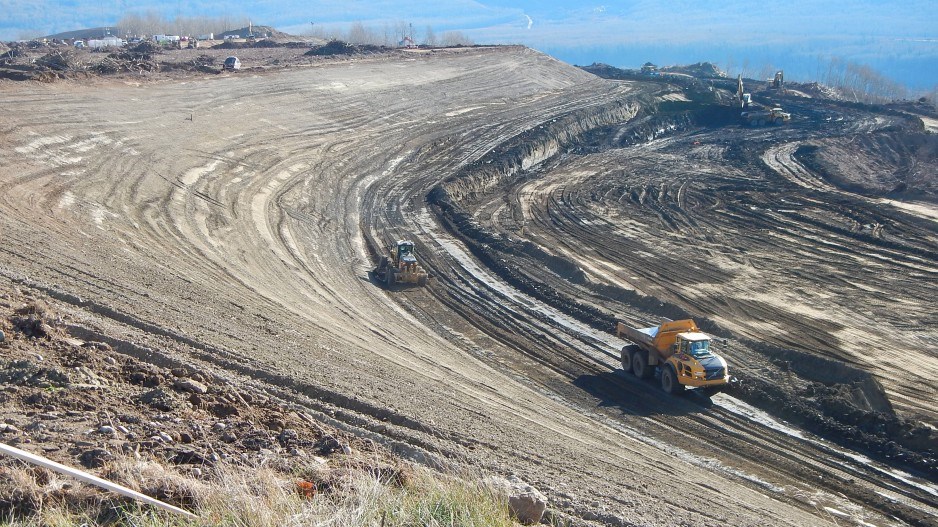BC Hydro’s second-quarter 2016 financial report points to lower domestic power demand and a projected drop in 2016 sales to large industrial customers resulting from mine and mill closures and other effects of the global commodity nosedive.
The Q2 2016 numbers continue the theme in the Crown energy corporation’s 2015 fiscal report, showing stagnant electricity demand from large industrial customers in the province over the past decade.
Meanwhile, a January 25 U.S. Supreme Court decision supporting the Federal Energy Regulatory Commission’s right to offer major power users financial incentives to curb power use during peak demand periods could dim BC Hydro’s power export prospects in North America via its Powerex subsidiary.
Despite those factors, opposition from First Nations and other groups and criticism from power analysts, the Crown power corporation’s $9 billion Site C dam remains on track, and Chris O’Riley, the Hydro executive overseeing the project, remains convinced of the long-term need for Site C’s capacity when it comes online in 2023, and of the fiscal prudence of the massive engineering project.
According to the Q2 report, revenue from Hydro power sales into the North American grid for the six months ended September 30, 2015, was down 44% compared with the same period a year earlier.
Among the reasons for the drop, according to the report: a 33% decrease in the average price of natural gas resulting from increased U.S. production.
Significant changes from the fiscal 2016 service plan noted in the report include a drop in large industrial and commercial categories “largely as a result of lower forecast customer load in the mining and pulp and paper sectors due to metal mine closures, closure of a major pulp and paper mill [Howe Sound Pulp and Paper] in July 2015 and lower commodity market outlook.”
Numbers in Hydro’s 2015 fiscal report show flatlining electricity demand from large industrial customers in the province over the past decade. Sales in that category have slipped 15% from fiscal 2006 to fiscal 2015.
Those numbers have again raised questions over the need to invest billions in building Site C.
Robert McCullough, principal of energy policy research company McCullough Research, said the horizontal hydraulic fracking revolution has rendered Site C “an expensive luxury” in a world where the price of natural gas is roughly one-third of what it was in 2008.
In December, natural gas spot prices, according to OilPrice.com, hit their lowest monthly average since 1999.
McCullough’s May 2015 report for the Peace Valley Landowner Association questioned the math used in Hydro’s far-lower projection of per-megawatt-hour costs for Site C versus such alternatives as independent power projects.
In an interview with Business in Vancouver prior to a recent visit to Vancouver, the Portland, Oregon-based McCullough reiterated the concerns raised in his report over such issues as Hydro’s discount rate (cost of future money) for Site C and cost assumptions for Site C alternatives that Hydro used in its calculations to justify the project.
But he emphasized how dramatically the plunge in natural gas prices, generated by the advent of horizontal fracking technology, has changed the global energy marketplace – to the point that “only an idiot would be building a very expensive project in Canada instead of buying power on the open market.”
He pointed out that the chief expense for electricity generated by natural gas is the gas itself, which can now be bought far into the future relatively cheaply.
The U.S. Energy Information Administration predicts that natural gas prices will remain low and stable for the long term. According to its projections, spot natural gas prices will be lower in 2020 than they were in 2015.
In a December Site C information briefing with Business in Vancouver, O’Riley said that despite the recent drop in energy demand, Hydro is confident in its forecasts of 1.1% annual growth in electricity demand in B.C.
“You don’t build something like this [Site C] for today or even 10 years; you build it for the long term.”
O’Riley said the forecast is based in part on population migration to B.C. and “the continued reliance in B.C. on the resource sector,” regardless of whether liquefied natural gas export plants are built in the province or not.
“But we know you can never get supply and demand to match up perfectly, so we know we’ll be some years short and some years long, and we have got a good capability to optimize that, so we think … particularly in a carbon-constrained world, there’s a long-term benefit for low-cost, low-[greenhouse gas], reliable, dependable, firm power.”
Site C would add around 10% to the province’s overall annual electricity output of 60,000 gigawatt hours.
BC Hydro claims the cost for Site C power will be between $58 and $61 per megawatt hour, but that’s a cost levelized over 70 years. Actual costs in a given year could be much higher.
Power can be bought in the North American market for less than half that range.
Hydro estimates that Site C will result in ratepayers paying an average of $650 million less each year over the first 50 years of the dam’s operation compared with a power portfolio generated by independent power producers or natural gas.
O’Riley added that with interest rates so low, it’s a good time to invest in major power infrastructure projects like Site C.
As to the impact of the U.S. Supreme Court decision on Hydro’s power export prospects in America, Mike MacDougall, Powerex’s director of trade policy, said in an email that the changes will have little effect on Hydro’s trade with U.S. markets because they predominantly affect market-clearing prices during higher-priced hours and won’t significantly change overall market demand.




